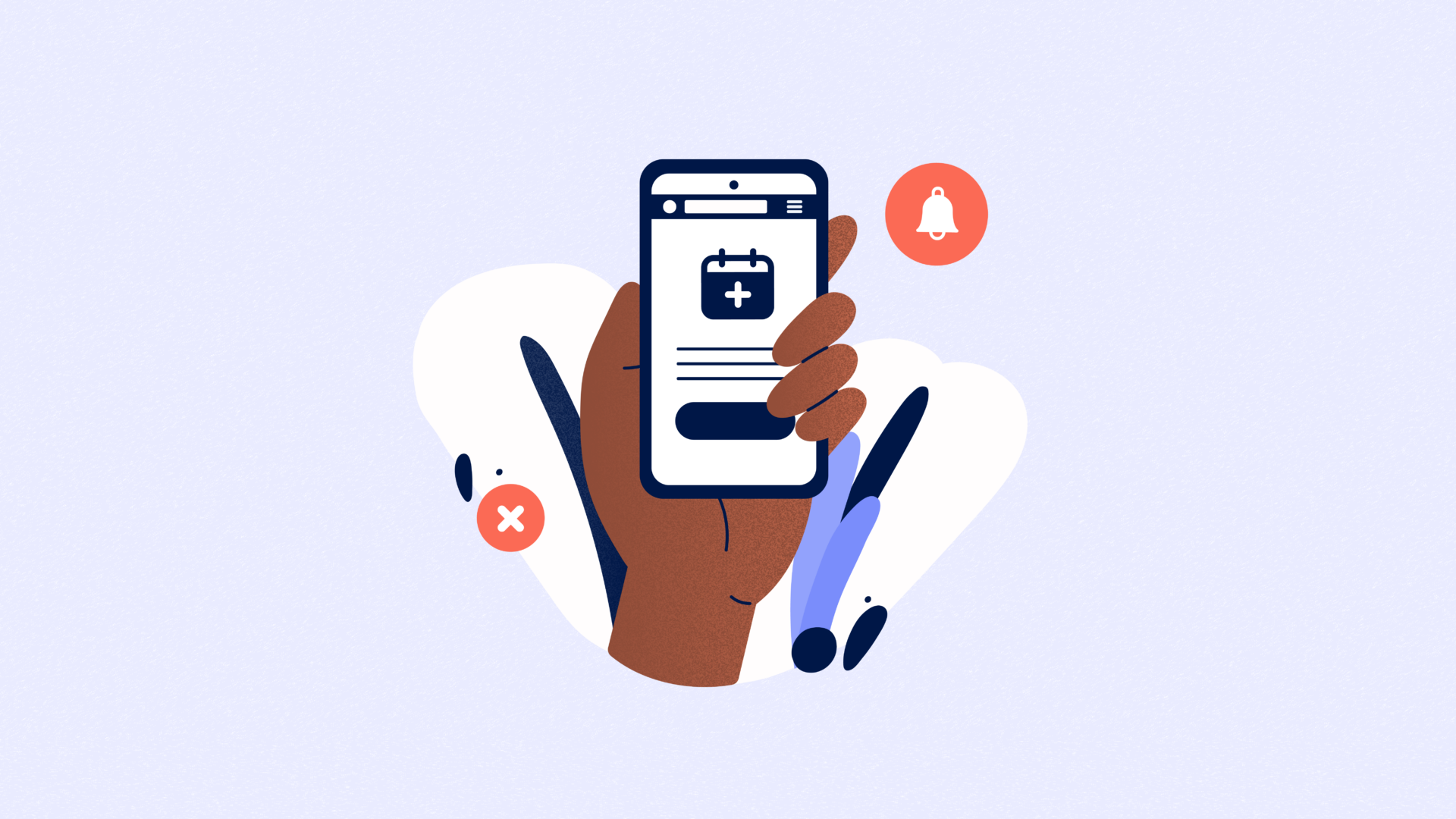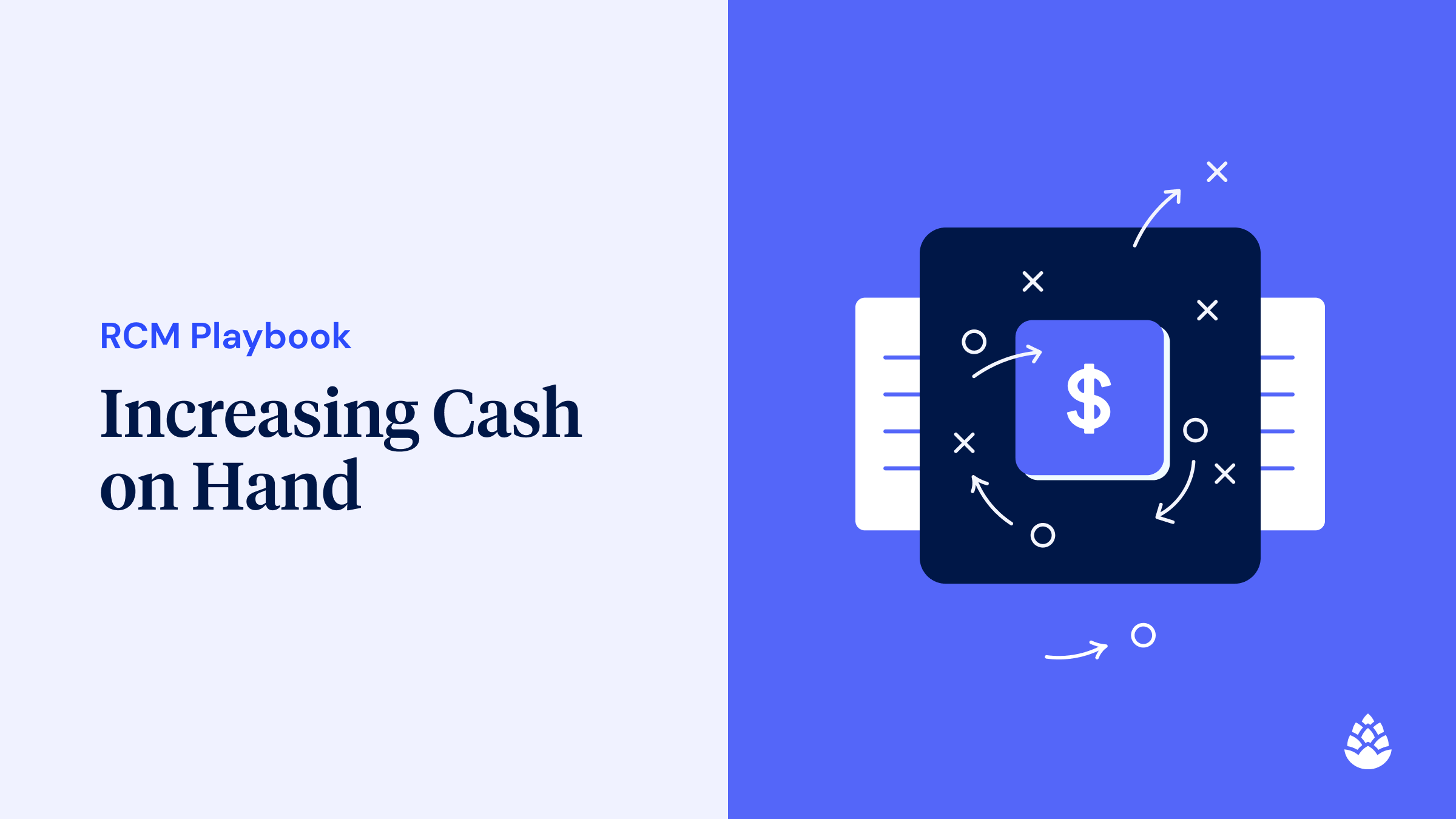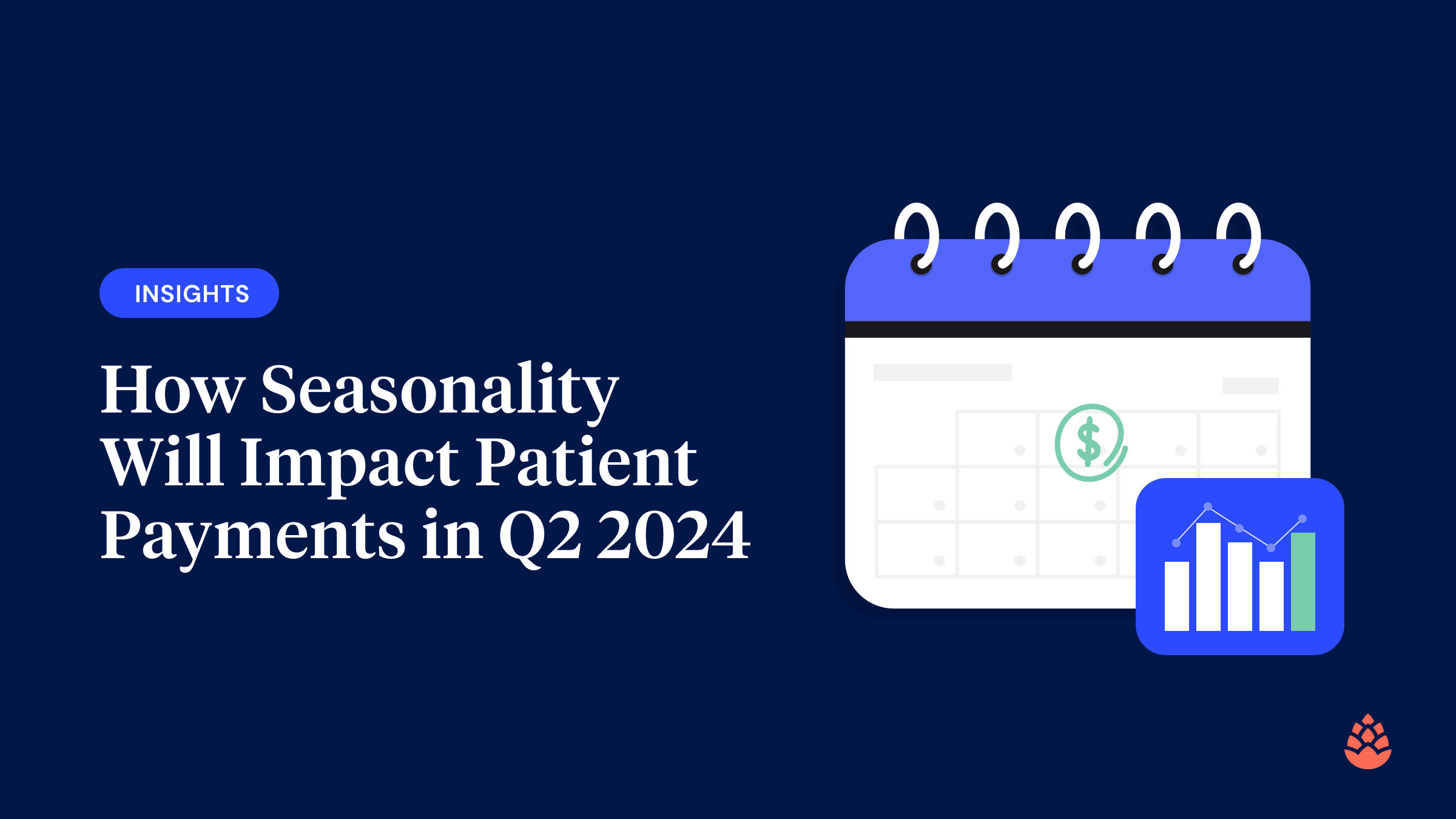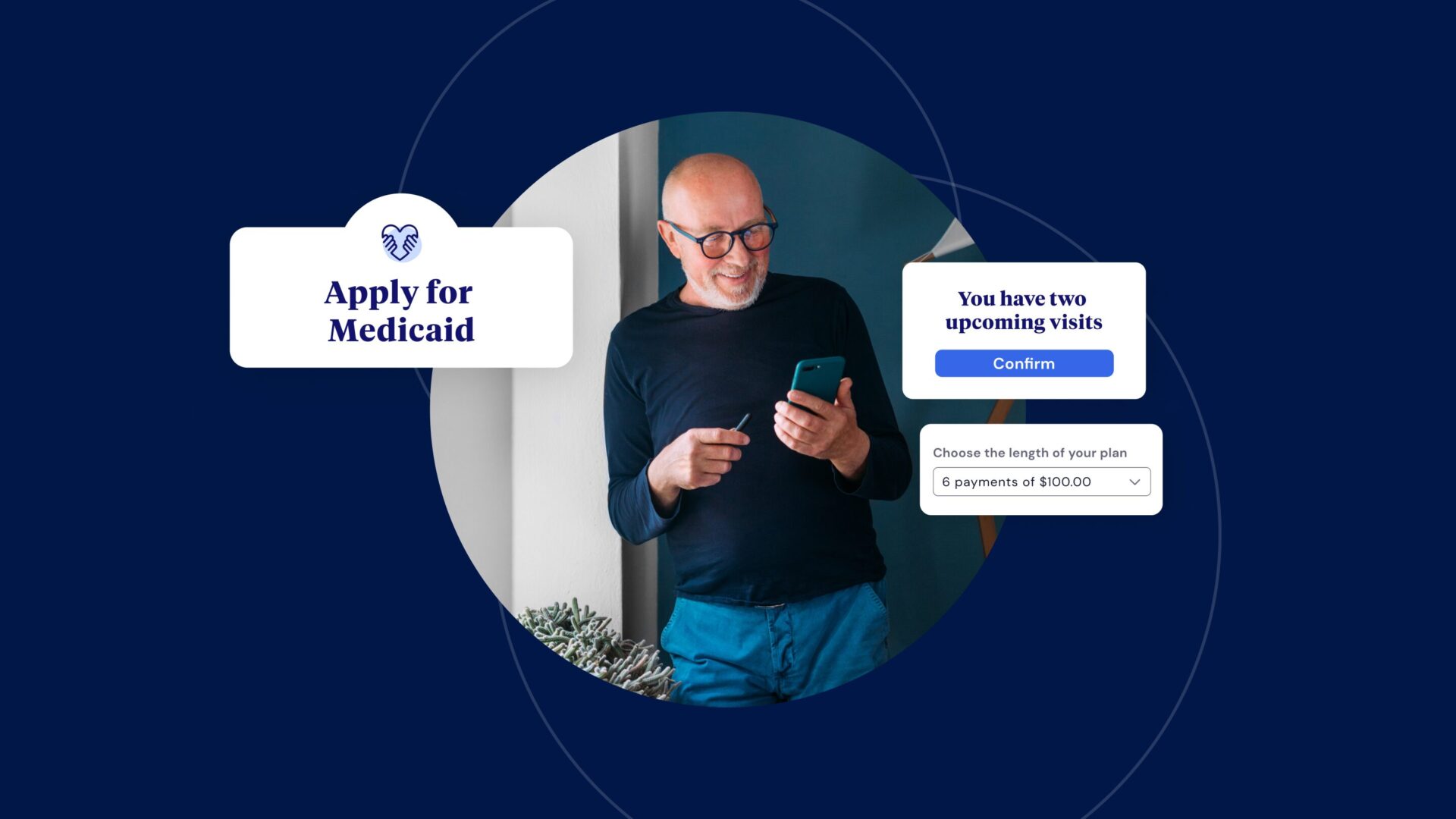This blog post was originally published on The Patient Experience Studio on Medium, where Cedar’s Product Design and Data Science teams share a behind-the-scenes look into how we’re building a better financial experience.
One of the biggest pre-visit problems for providers is the dreaded “no-show,”—an appointment in which the patient does not show up, without canceling or contacting the office. As we’ve explored previously, no-show visits are an expensive inefficiency, costing the industry as much as $150B a year. But even more importantly, no-shows can be a dangerous delay or disruption to necessary patient care
As a product analyst, my job is to use data to explore how patients use Cedar, and identify ways to improve their patient experience. Specifically, I work on Cedar Pre, a pre-visit solution visit that delivers a digital concierge experience to patients preparing for care. While forgetfulness and scheduling logistics are often cited as the main reasons for missing appointments, our data was telling a more nuanced story about why and when patients may need an extra nudge—and where there were opportunities to offer tailored reminders and support.
By analyzing Cedar Pre data, we identified six factors that would put patients at a higher no-show risk:
Patient age
Younger patients no-show more. In fact, patients under 40 years old have a no-show rate that is 48% higher than the general population. This could be due to the fact that younger patients tend to be casual consumers of healthcare, while older patient populations use healthcare more frequently, and have more time-sensitive medical issues.
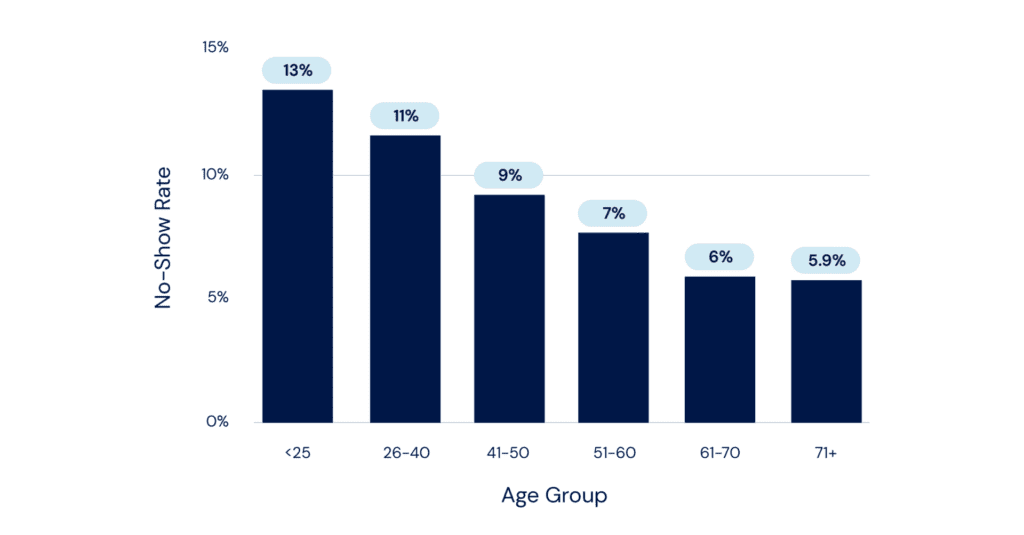
Engagement with an appointment reminder
With Cedar Pre, most patients will receive two appointment reminders in advance of their visit via text and/or email. These reminders direct users into the Cedar platform where they can confirm their visit, fill out any necessary information required by the provider and pay their copay ahead of time.
Patients who do not click on a text or email appointment reminder are 55% less likely to no-show. And on the flip side, patients who have engaged with a Cedar reminder in the past are 20% less likely to no-show than first-time users. This suggests that it is not just sending reminders that helps to prevent no-shows, but encouraging patients to click into Cedar to acknowledge and confirm their visit ahead of time
Scheduling a copay payment ahead of time
Patients who have a copay due for their upcoming visit have an opportunity to schedule this payment in advance with Cedar Pre. Although the payment is not charged until a patient shows up to their visit, these patients are 68% less likely to no-show when compared to patients who saw the charge, and decided not to pay it—indicating that paying a copay ahead of time may be an indication of a patient’s intent to show up to their visit
Appointment time
Visits scheduled in the early morning (before 10am) and late afternoon (after 4pm) are more likely to become no-shows. And, no-show rates tend to spike around lunchtime. Understanding that late morning and early afternoon time slots work best for patients could help providers to optimize their schedule in order to prevent no-shows.
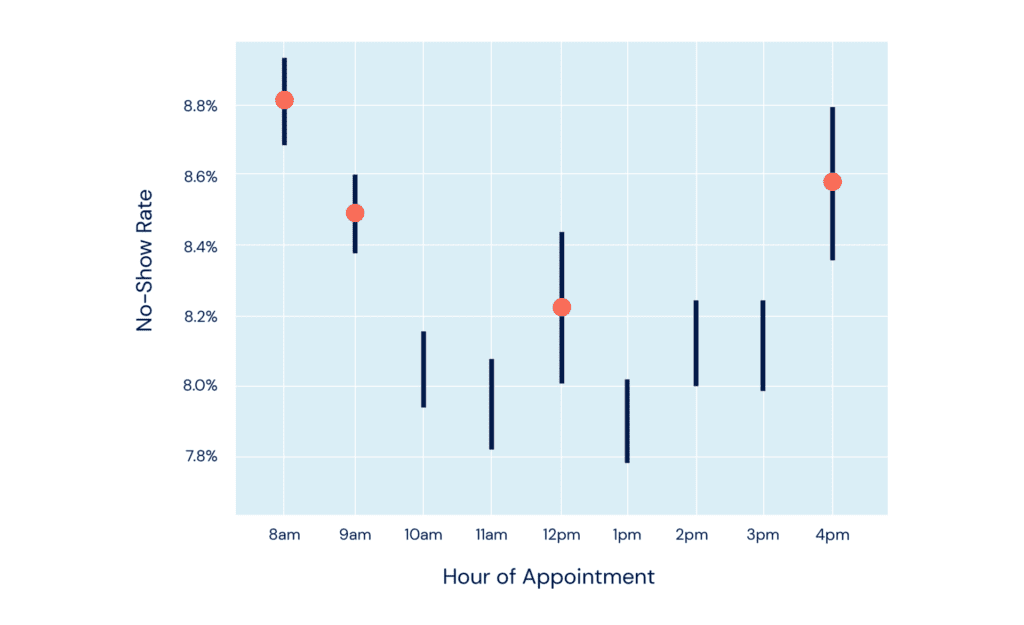
How far in advance the appointment was scheduled
Visits that are booked between 5 and 30 days in advance had the lowest no-show rates.
The greatest risk of no-shows are patients that book last-minute appointments (within five days) and long-lead appointments (between one and four months in advance). And while no-show rates are low for patients who book more than 4 months in advance, cancellation rates are high.
This indicates that these patients are not forgetting about their visit altogether, but perhaps just forgetting the importance of why they scheduled the visit in the first place, as symptoms or urgency diminishes.
Patient proximity to the office
Patients who live more than 15 miles from their appointment location are 10% more likely to no-show than patients than patients who live within 15 miles of their appointment. This suggests that these patients may need extra support to ensure they set aside additional time for travel.
While there are certainly a myriad of reasons why a patient may fail to show up to their visit, these six indicators can help us make meaningful product updates that encourage patients to take care of their health, and reduce the operational and financial impact of no-shows on providers. We’re working on leveraging these insights to inform experimentation on personalized communications that could prevent no-shows—stay tuned for the results!
Emilie Hasselmann is a Data Scientist on the product analytics team at Cedar. She is currently working on studying and optimizing the Cedar Pre patient experience.
